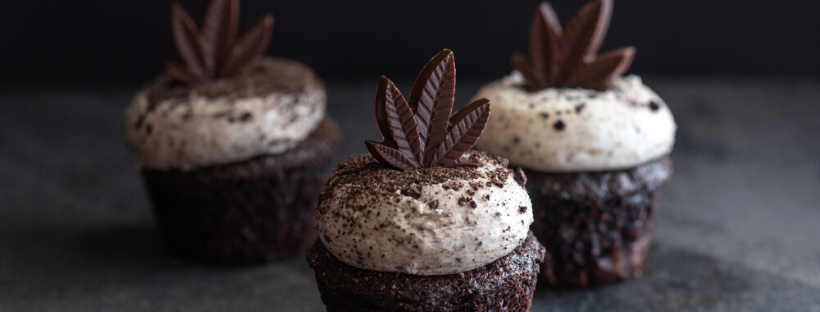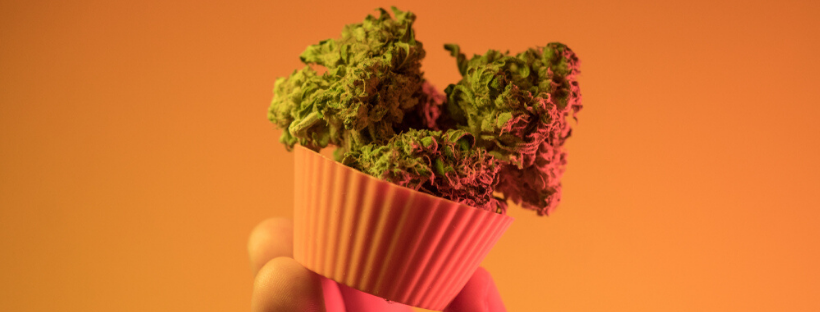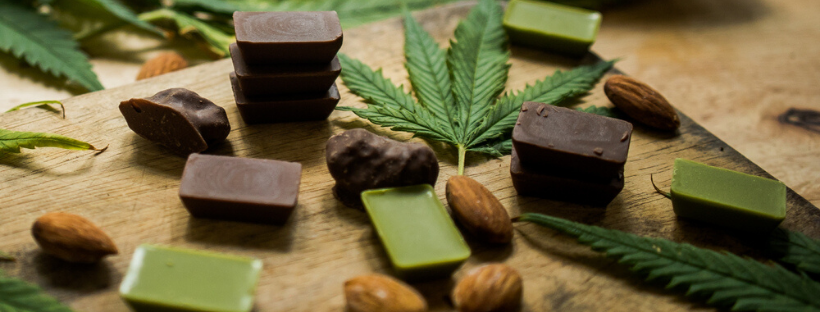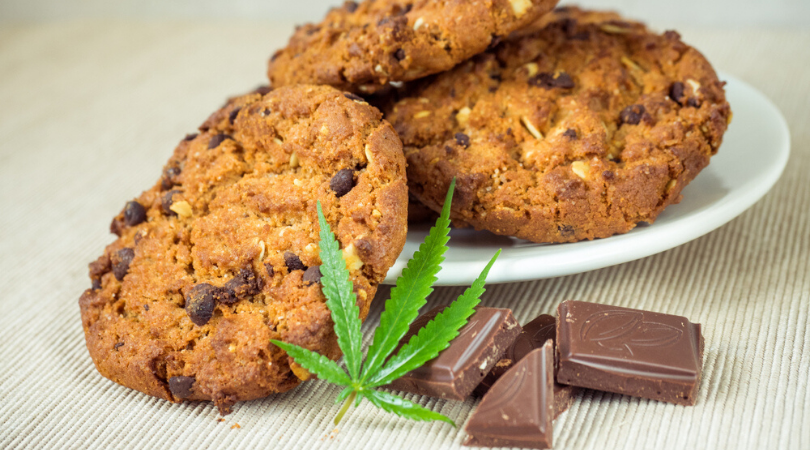When it comes to using cannabis, you might accidentally take too much if you do not understand how to calculate the amount of THC in a serving. You will also want to know just how THC affects your body. However, considering how popular edibles are, there is not a whole lot of information about the process of making them. This includes making sure the dosage is right.
If you have other marijuana-loving friends, you may have heard from one of them that it is easy to consume too much. Even the most seasoned marijuana enthusiast has most likely run into this issue. This is often because they do not understand how to properly calculate the amount of THC in one serving. Depending on the type of edible you have made, the THC will affect your body in different ways.
Luckily, by following a few simple guidelines, you can easily prepare and consume your edibles. There is no such thing as having too much information about this process.
How Professional Cannabis Companies Calculate Dosage
Because it is so difficult to accurately analyze the potency of edibles, many producers test at several stages. First, the growers test the flowers that they are using for production. This gives them an estimate of how much each terpene and cannabinoid can be extracted.
Later, they will test the extract to determine how effective the process to extract the substances was. The last step is to test the plant matter after extraction. This will confirm how many terpenes and cannabinoids were left. Unfortunately, as a home baker, you most likely do not have the resources to do this type of in-depth analysis.
Variables in Calculations
When you decarboxylate cannabis, a substance known as THCA breaks down to yield THC. Decarboxylation is an important step before making edibles. However, it does not break down into the same amount of THC. Instead, the conversation rate is about 0.88. Many producers do this for you, but others only tell you how much THCA is in the material.
If you extract the substance into oil or butter, this can be inefficient. Sometimes, you are only extracting around 40 to 60 percent of the terpenes and cannabinoids in the final product. Certain types of oils are less effective when it comes to extracting. Coconut and butter are generally the best, while vegetable or canola oil do not retain as many cannabinoids and terpenes.

Reducing Variation
The good news is that there are some things you can do to reduce the level of variation in your edibles. First, when you are making cannabutter, remember that the liquid at the bottom will be different than at the top. Instead of just taking a scoop, you should stir it well. Continue stirring it until you think it is well mixed, and then stir it a little bit more.
You will also need to measure out everything precisely. For example, if you are making cookies, you should use a scale to evenly weigh out the dough before baking. After making brownies, you should cut each one into equal pieces by using a ruler. For the butter, you should use a measuring cup to fill it precisely.
Knowing the Amount of THC in a Strain You Are Using
On average, many strains have about 10 percent of THC in them. If you get a strain that has more than about 15 to 20 percent, it is higher than average. For strains that have more than 30 percent, they are more often than not used for medicinal purposes. You will want to look up the strain online to learn more about it. You can also ask your cannabis provider how much THC is in the strain.
The effect that you want to have will play a role in how much to dose at one time. For example, the right dose for each person will vary depending on their health and general weight. If you have built up a tolerance to THC or other cannabinoids, you may need to take more to feel the effects.
How Much to Start With
Let’s look at an example of a strain that has about 10 percent THC. One gram of this marijuana would have 100 milligrams of THC. This is a simple math problem that you can use to figure out (or at least guess), how much THC to ingest per serving. That way, you can better control your high, as well as prepare the edible properly.
You might be wondering how much you should take if you are a beginner. You can start out at around 5 milligrams per serving. Three grams of marijuana has 300 milligrams of THC. That means that for a 60-cookie batch, there will be 5 milligrams of THC in each one.
Remember that THC may take some time to kick in. This has led many people to have negative experiences with edibles. This is because homemade edibles often have strong levels of THC and take a while to go into effect. People think the edibles are not working and take more than necessary. Then, they have a mind-boggling high.
By starting with a smaller portion, you can wait to see how well your body reacts to it. For example, you could even consider taking half of a dose and see how you feel in about 45 to 60 minutes. Then, if you need to, you can take the rest of your dose. That way, you will not waste your marijuana by becoming too high.

Increasing Your High
If you have found that your edibles are still not potent enough and you want an additional kick, you can add some lecithin. This is a binding agent, or emulsifier.
This helps to keep ingredients such as lipids together. Egg yolks are one natural source of lecithin, which is why so many baked recipes call for them. You can also find lecithin in chocolate, so making chocolate cakes or brownies can help you to feel a little higher.
Some research has shown that when you smoke weed, your body only absorbs about 30 percent of it. For example, assume that you have 1 gram (1,000 milligrams) of cannabis with 20 percent THC. This means that there are 200 milligrams of THC in each gram of cannabis. Thirty percent of this is 60 milligrams. So, for every gram of cannabis that you smoke, you may only be getting about 6 percent (60 milligrams) THC. When it goes into your digestive system, there is likely even less. This is why you may want to use the above tips to ensure that you get enough THC.
Tips for Cooking with Cannabis
A good tip to follow is to prepare your kitchen ahead of time. If you live in a small space, then you will want to make sure you have cleaned up the kitchen to give yourself a bigger work area. You will want to make sure you clean your utensils both before and after using them to avoid any contamination. Cooking with marijuana can be aromatic, so you will want to open a couple of windows and turn on a fan.
Much of the herb you can buy is not as clean as it could be. From fungicides to insecticides to natural chlorophyll, your cannabis has many types of impurities. These can ruin the taste of the product. Instead, consider cleaning your weed before you use it.
You can do this by soaking it in distilled water for about three days. Make sure that you change the water every 12 hours. Next, you can put it into boiling water for five minutes and give it a one-minute ice bath right after to blanch it. Then, you can dry it and decarboxylate it with your oven.
Decarboxylation is an important process because it helps you remove carbon atoms from the weed’s compounds. That way, the herb’s cannabinoids can be activated. This is why weed needs to be heated by putting it in a vaporizer or combusting it so you can get the psychoactive effects. Cooking it in oil or butter is not enough to completely decarboxylate it. You will get to enjoy more of the rich cannabinoids in your food if you decarboxylate it.
Although heating your cannabis is important, you do not want to overdo it. It can start to burn at around 186 degrees C. If you cook or decarboxylate the herb above this temperature, the potency will dissipate. If you have a thermometer, you can use this to gauge the temperature. Just to be on the safe side, you will probably not want to go above about 170 degrees C. This helps ensure that the THC will still be activated, but the cannabis will not combust.
It may seem obvious, but you do not want to just toss your bud into your food and put it in the oven. This is not all that making edibles involves. Doing this will spoil the food because the weed will not have a pleasant taste. In fact, the dried pieces of the plant can make you throw up because they are indigestible, and they will not make you high.
Instead, you should make an infused oil or butter and then use this in your food. You can find many such recipes online. They usually involve melting the butter with some water, allowing the cannabis to infuse for several hours, and straining the pieces out.
However, there are certain amounts you should stick with. If you put too much weed in your oil or butter, your edibles will not be more potent. In fact, only a certain number of cannabinoids can bind to the oil or butter’s fat molecules. Using a recipe will help you prevent wasting your weed.

Label and Store Edibles Properly
Of course, you will not eat an entire batch of THC cookies, brownies, or other edibles in one sitting. You will need some way of storing them, so you know how much each one contains. This is one of the most important steps when it comes to homemade edibles.
You will need to keep them in a refrigerator using a sealed container. That way, they can keep longer. If there are children or pets present in your home, you should make sure to keep them out of reach. You might even need to keep them out of reach of adults who do not need to eat your marijuana products.
Chances are you do not want to accidentally eat them before you have an important meeting for work. Labelling them with the name, date, and THC content is a good idea. In some cases, you might even want to put them out of sight from yourself.
Managing Your High
There are a few ways that you can “tweak” your high if it is not where you want it to be. Many people enjoy cannabis with fatty, protein-filled foods because they the effects last longer. This is why using an alcohol base causes the duration of the effects to be shorter. You will want to remember this when you are consuming your edibles.
As mentioned earlier, you should also remain patient when you are using edibles. For example, if it has been longer than two hours since your marijuana edible, try eating something that has a bit of protein in it, such as meat or cheese. Doing this can help the high come on.
However, if you feel that you are a little too high, try raising your blood sugar. Drinking orange juice or another sugary beverage can do this. Try drinking something you like, which can help to get your spirits up a bit.
Closing Thoughts
Making homemade edibles can be a little more challenging than using premade ones. However, by following the right steps, you can make sure that your cannabis experience is rewarding. By following the right recipe and carefully measuring out the weed before you begin, you are more likely to know just how much THC is in your product. And if you do not get it right the first time, there is always the next time.


